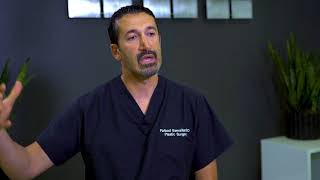Breast augmentation is an extremely popular cosmetic surgery. However, in some cases, breast implant complications or changes in the patient's weight or body shape can negatively affect breast augmentation results. If you're in this situation and would like to restore the appearance of your breasts, breast revision surgery by plastic surgeon Dr. Farbod Esmailian in Orange County, CA may be exactly what you need.
Does everyone with breast implants need revision surgery?
Yes, just about everybody who has breast implants will need to have revision surgery at some time. The FDA cautions patients that “breast implants are not lifetime devices.” Even if a person does not experience breast implant complications or seek a different breast appearance, implants eventually need to be replaced at some point in your lifetime.
How much does breast augmentation revision cost?
Breast revision surgery in Orange County can vary quite a bit depending on several factors, including the specifics of the procedure, the anesthesia fee, post-surgery garments, and any needed tests or studies. During your consultation with Dr. Esmailian, he will be able to give you more precise information about the cost of your surgery.
Can breast revision surgery correct capsular contracture?
Yes, in many cases, breast revision surgery can correct capsular contracture.
Are there visible scars after breast revision surgery?
Dr. Esmailian always makes the incisions as small and inconspicuous as possible to minimize scarring, and in many cases, he can utilize the original incisions from the breast augmentation.
Will health insurance cover breast revision surgery?
Generally, breast revision surgery will only be covered by health insurance if the procedure is deemed medically necessary.
Will the implants be removed completely?
In many cases, the breast implants are removed completely and replaced with new customized implants during breast revision surgery.
Should the original breast augmentation surgeon perform the breast revision?
Ultimately, it's up to the individual patient, but if you're unsatisfied with the results of your breast augmentation, you may want to choose a new, more experienced plastic surgeon for the breast revision procedure.

























